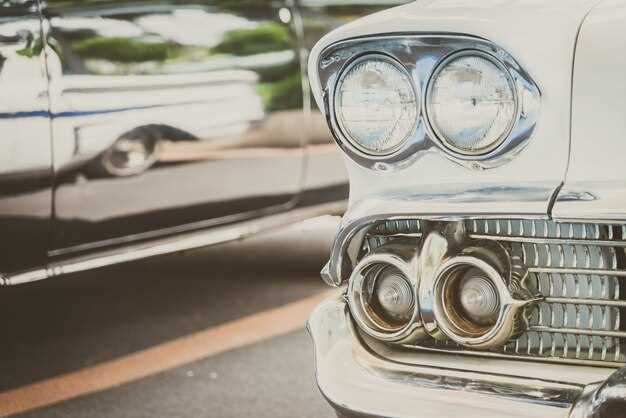
The world of classic cars is both thrilling and complex, with the market for iconic vehicles like Porsche continually evolving. Understanding how to properly appraise a classic Porsche requires a deep knowledge of its unique attributes, historical significance, and the current trends that influence its value. This guide aims to provide a comprehensive approach to evaluating these magnificent machines, ensuring that both potential buyers and current owners can make informed decisions.
Market conditions can significantly affect the value of classic Porsches, making it vital to remain updated on recent sales and auctions. Factors such as mileage, condition, rarity, and provenance play crucial roles in determining a vehicle’s worth. By analyzing these components, one can gain insights into how various models have appreciated or depreciated over time. Understanding these elements allows enthusiasts to properly appraise a classic Porsche, ensuring they recognize its true value in today’s competitive market.
Moreover, the intricacies of a proper appraisal go beyond mere pricing. It involves an appreciation for the craftsmanship and engineering that make Porsche a legendary brand. Factors such as the car’s history, documented maintenance, and previous ownership can deeply impact its desirability and, subsequently, its market value. This guide will explore each of these elements in detail, providing a robust framework for appraising classic Porsches with accuracy and confidence.
Understanding Market Trends for Classic Porsches

Monitoring the market trends for classic Porsches is essential for both collectors and potential buyers. The value of these vehicles is influenced by various factors, including rarity, condition, historical significance, and market demand. As the automotive landscape evolves, certain models see peaks in appraisal values while others may stagnate or decline.
First, it’s important to recognize that the classic car market operates cyclically. Seasonal factors, such as auction events and car shows, often contribute to fluctuations in pricing. Additionally, global economic conditions play a significant role; during economic booms, luxury collectibles, including classic Porsches, tend to appreciate in value. Conversely, during downturns, prices may drop as discretionary spending decreases.
Another critical aspect is the growing interest in classic cars among younger enthusiasts. This demographic shift has revitalized certain models, pushing prices higher. Social media platforms and online marketplaces have also amplified visibility, allowing collectors to engage with a larger audience. Consequently, previously overlooked models can gain traction and increase in value.
Condition and provenance are paramount when appraising classic Porsches. A well-documented service history, original parts, and low mileage can significantly enhance a vehicle’s appraisal value. It’s advisable to consult market reports and auction results for comparable sales to gauge a fair price. Active participation in clubs and forums can provide insights into potential trends and peer valuations.
In summary, understanding market trends for classic Porsches requires ongoing research and a keen awareness of external factors driving value. Regular appraisal helps owners navigate these changes and makes informed decisions, whether they are buying, selling, or simply holding on to their cherished vehicles.
Key Factors Influencing Appraisal Values
When appraising a classic Porsche, several key factors significantly impact its market value. Understanding these elements is crucial for an accurate appraisal.
Firstly, the model and year of the Porsche play a critical role. Certain models, especially those that were produced in limited numbers or have a rich racing heritage, tend to appreciate more over time. The rarity of a specific model can create a high demand in the market, consequently raising its appraisal value.
Secondly, the condition of the vehicle is paramount. A well-maintained Porsche with original parts, low mileage, and documented history will fetch a higher appraisal compared to one with extensive modifications, wear, or damage. Professional inspections often help clarify the car’s state, influencing the final value.
Another significant factor is the maintenance and service history. Comprehensive records that show regular servicing and repairs performed by qualified professionals can enhance buyer confidence, thereby positively affecting the appraisal. Cars that have been restored or maintained according to factory specifications typically hold greater value.
Market trends also heavily influence appraisal values. Economic factors, changes in buyer preferences, and the overall popularity of classic cars can affect market dynamics. A surge in interest for vintage vehicles or a particular model can significantly increase appraisal values as demand rises.
Finally, provenance can impact a car’s worth. A classic Porsche with a known history, including notable previous owners or participation in prestigious events, can command a premium value. Buyers often see these attributes as indicators of authenticity and desirability.
In summary, to appraise a classic Porsche accurately, it is vital to consider the model, condition, maintenance history, market trends, and provenance. Each factor interplays with the others, shaping the overall appraisal value in a competitive market.
Steps to Conduct a Thorough Vehicle Inspection

Conducting a thorough vehicle inspection is essential for accurately appraising the value of a classic Porsche. Follow these steps to ensure a comprehensive evaluation.
1. Documentation Review
Start by examining all documentation related to the vehicle. This includes the title, service records, and any past appraisals. Authenticity and maintenance history can significantly influence the vehicle’s value.
2. Exterior Condition Assessment
Inspect the exterior for any signs of rust, dents, or paint imperfections. Look closely at panel gaps and alignment, which may indicate previous accidents. A well-maintained exterior enhances the overall value of the car.
3. Underbody Inspection
Examine the underbody for signs of corrosion or damage. This area often reveals critical information about the car’s overall condition. Check for leaks from the engine, transmission, or differential, as these can affect value considerably.
4. Mechanical Components Evaluation
Test the engine and transmission functions. Listen for abnormal noises, check for smooth gear changes, and assess performance. A well-functioning powertrain is essential in determining the vehicle’s value.
5. Interior Examination
Evaluate the upholstery, dashboard, and controls for wear and tear. Original parts maintain higher value, while aftermarket modifications may detract from it. Ensure all interior components function properly.
6. Road Test
Take the vehicle for a test drive to assess handling, braking, and overall driving experience. Pay attention to any vibrations, sounds, or performance issues that may impact appraisal.
7. Professional Appraisal
If necessary, consult a professional appraiser with experience in classic cars. Their expertise can provide a more detailed analysis and establish a fair value based on current market conditions.
By following these steps, you will be equipped to conduct a thorough vehicle inspection that accurately reflects the appraisal and value of a classic Porsche.
 Skip to content
Skip to content





